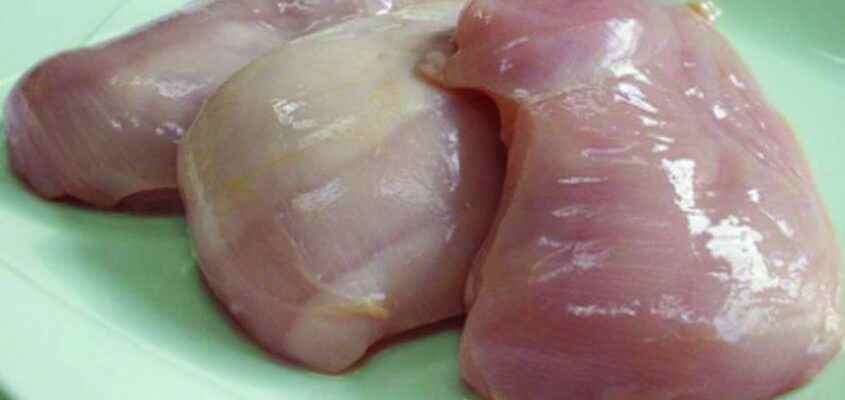When broiler birds put on too much weight too fast the circulation system can’t keep up. Quality issues show up at the packing plant
Content item
The speed at which modern broiler chickens put on muscle is often too fast for its blood circulation system to catch up.
Advertisement
This advertisement has not loaded yet, but your article continues below.
Content item
Feed conversion and daily weight gain for broilers through improved genetics borders on the miraculous which has benefited those who grow the birds.
However it has been accompanied by health problems that are resulting in higher levels of trim meat at processing plants, unfit for human consumption.
It is a problem not usually detected on-farm in the large full-feathered birds as they reach market weight.
“What you (farmers) see on the farm is not what we see at the plant,” said Dr. Chantelle Taylor, veterinarian at Cargill’s broiler processing plant in London.
She was referring to three physical diseases affecting the higher priced breast meat, which the birds have been specifically bred to produce in larger percentage of body weight. Portions of the breast basically become dead tissue for lack of a blood supply.
The condition is known as muscle myopathy, graphically categorized as spaghetti breast, woody breast or white stripping disease.
When broiler birds put on too much weight too fast the circulation system can’t keep up. As a result the metabolic waste (CO2 and lactic acid) cannot be removed.
The condition is seen in both the Ross and Cobb breeds, said Taylor.
In woody breast the muscle tissue is hard and wooden. Sometimes the breast has square of blocky edges
The lack of blood supply to the growing tissue of large birds results in necrosis or death of muscle fibres. This leads to fibrosis and the replacement of muscle tissue with connective tissue and a stiff texture.
Advertisement
This advertisement has not loaded yet, but your article continues below.
Content item
White striping is often present with woody breast. It is characterized by muscle tissue exhibiting large white striations that run parallel to the direction of breast and leg muscle fiber.
The condition is due to a physiological process rather than a pathological cause.
Spaghetti breast results in soft and mushy muscle fiber that will come apart in stringy sections. It is caused by rapid increase in muscle fibers already present rather than the addition of new fibers.
The meat has a musky texture related to a decrease in protein and an increase in moisture level.
More than one of the three conditions can be present simultaneously or in various combinations.
Workers at the processing plant must trim the affected meat portions by hand which adds to the cost of processing, said Taylor.
Also, the extra labor required for the process is sometimes not available.
If a high percentage of the breast meat is affected it is not worth saving and must be totally discarded. This also occurs when scattered hemorrhages accompany white striping throughout the breast.
“The breast meat is certainly less appealing to look at,” said Taylor.
The three conditions are sometimes accompanied by a fourth detrimental condition – subcutaneous cellulitis. This develops from the heavy, large-breasted birds prone to sitting in one spot on damp manure pack because of difficulty in moving around, especially in high-density populations.
“Get the birds up and get them moving,” suggested Taylor as an intermediate solution.
Advertisement
This advertisement has not loaded yet, but your article continues below.
Content item
Woody breast is not caused by cellulitis or visa versa.
“Muscle myopathy can be a one-and-done occurrence or an ongoing situation,” said Taylor.
Research is being carried out to determine if there is a relation between muscle myopathy and a condition referred to as turtle backing. This describes birds that have somehow landed on their back and are unable to get back up.
Further causes of muscle myopia were identified as low vitamin E and selenium levels; a high-energy diet; an increase of calcium in the tissue cells.
Currently there are very few things a producer can do to reduce the incidents or severity of muscle myopia.
One commercial product suggested was Creamino, manufactured by Proteka, which affects energy metabolism and muscle building.
A slower growth curve combined with a steadier growth rate could also lessen the chances of the disease developing.
No trigger for the onset of the disease – which can be seen in the broiler life cycle as early as 14 days – has been identified. Several organizations are working on research as the conditions of the disease are seen around the world.
While muscle myopia has a dramatic and detrimental effect on meat quality it is not a food safety issue, said Taylor.
